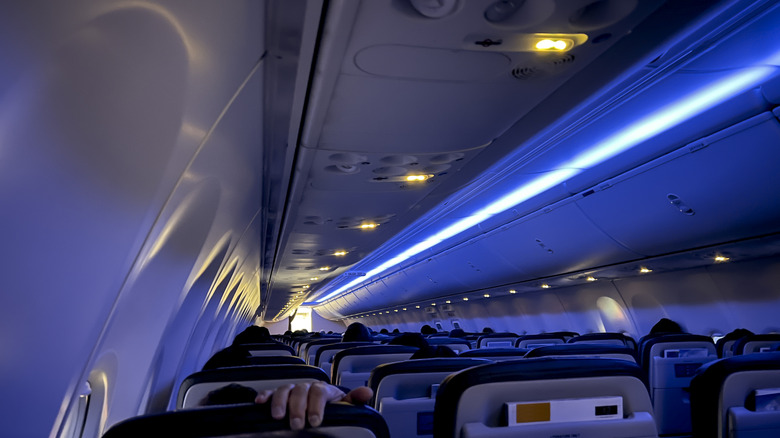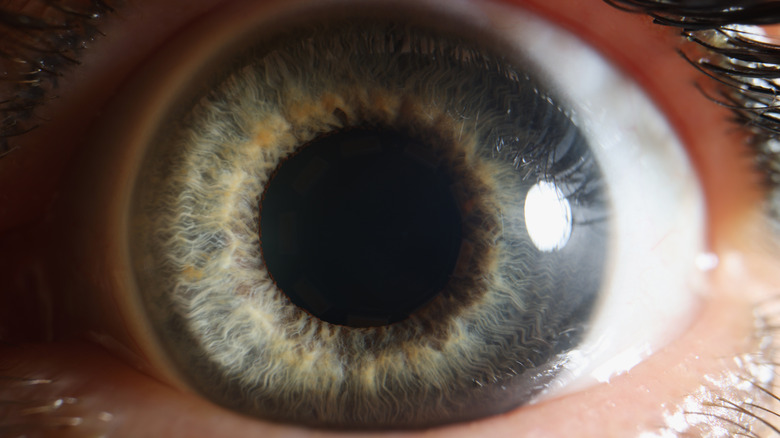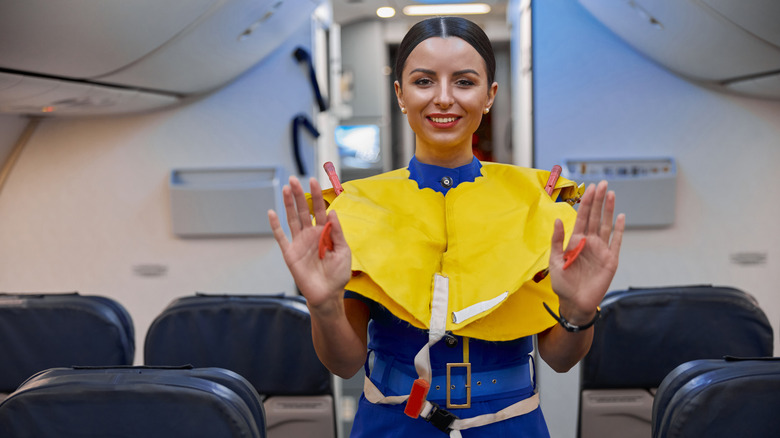The Science Behind Why Cabin Crews Dim The Lights During Takeoff And Landing
Commercial air travel has been around for almost a century, but flying remains a stressful experience for many of us. Despite the fact that it involves being propelled thousands of feet into the air at hundreds of miles an hour, it tends to be the little stuff that we really sweat. Airport security, timing your arrival at the airport, the price of snacks, the scarcity of storage space, the lack of legroom, the difficulty of fastening the safety belt — these are all such universal annoyances that they have become the subjects of countless stand-up comedy routines.
However, many plane travel annoyances are for our own good. Namely, for the sake of safety. Some protocols are for our safety during routine trips — wearing your safety belt during turbulence, for example, helps prevent you from being thrown around in your seat. Others are in case there happens to be an emergency. The latter situation explains one of the more mysterious parts of the experience of travel: Turning off cabin lights during takeoff and landing. It may be tempting to assume that the procedure is for the benefit of the crew, or perhaps airport staff. But surprisingly, turning off the lights for a period is intended to improve the vision of passengers in case of an emergency.
Dimming the lights adjusts your eyes
Try to recall the last time you went to the bathroom at night. Did you turn the light on? If so, did you then have trouble making your way down the dark corridor to your room and finding your way back to bed? The reason for this is that the human eye is typically slow to adjust its focus when plunged into sudden darkness from a relatively bright environment. Specifically, it takes about 20 to 30 minutes, during which time the cones and rods of the eye gradually become more sensitive to the point of "dark adaptation," allowing the person to perceive their surroundings in the darkness, according to Scientific American.
In the event of a sudden loss of power in the cabin during takeoff or landing, passengers would have to quickly evacuate — and find themselves having difficulty navigating to the exits due to the fact that their vision would have barely adjusted to the new conditions. But by dimming the cabin lights during the most dangerous passages of the flight, passengers' eyes are given a few minutes to adapt to the dark conditions, making a potential evacuation more orderly and therefore safer.
Preparing passengers for an evacuation
Thankfully, emergencies on commercial flights are vanishingly rare, and the old maxim seems to remain true: You are generally safer in the air than you are driving in your car, walking down the street, or even residing in your own home. With that in mind, almost all of the rules and procedures related to air travel arise from the necessity of ensuring passenger safety to the highest possible degree. This includes making sure passengers on board are ready and prepared to be evacuated from the plane in the shortest time possible — and with the least possible risk and complication.
Turning out the cabin lights, keeping your chair in an upright position, and folding away your tray table for takeoff and landing are also measures intended to aid passenger evacuation in case of an emergency, as doing so creates fewer obstacles and allows for an easier exit from the seating rows into the aisles. Similarly, keeping window blinds open allows passengers to see the lay of the land outside before they disembark while allowing emergency responders to see the situation inside the cabin in the event of a rescue.


